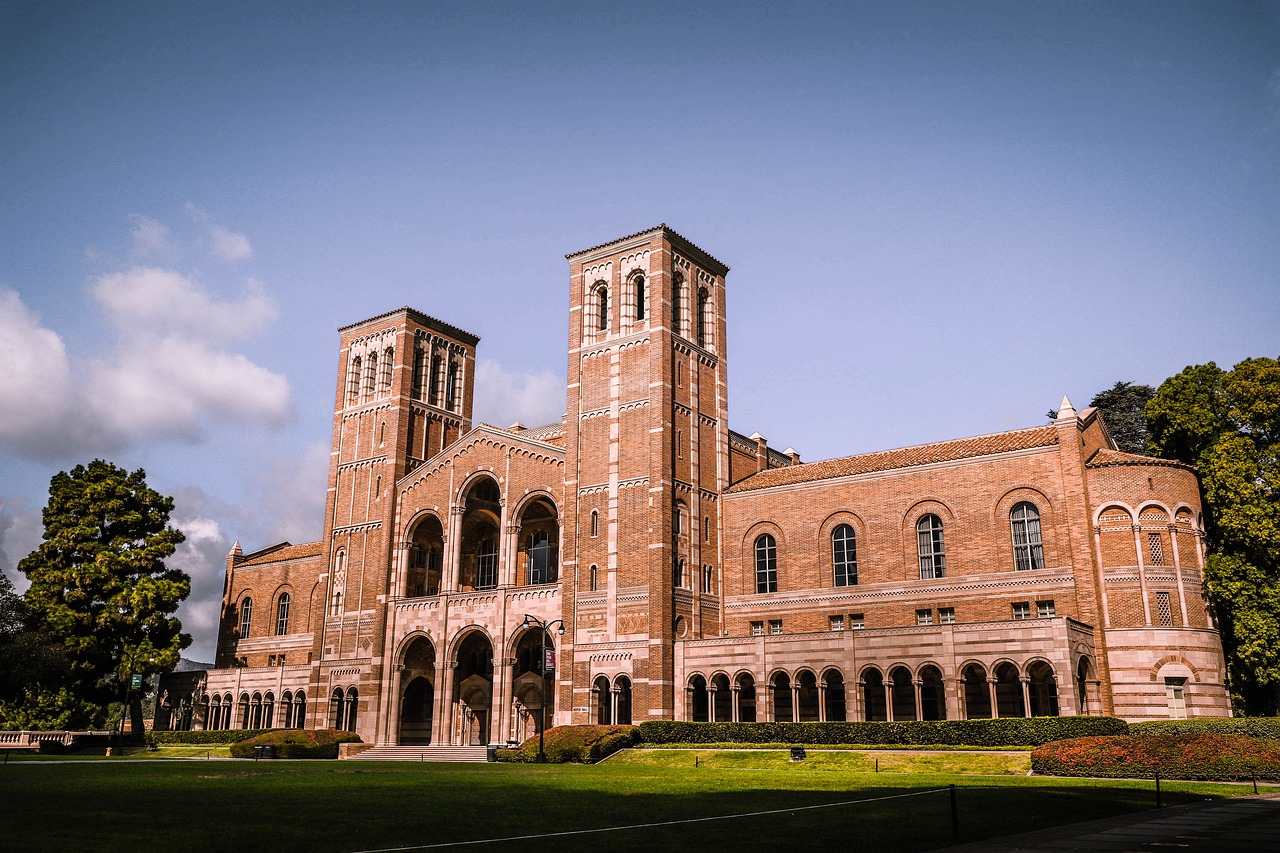
As 2017 has come to a close, we can look back and remark on the many great achievements that came out from the year. Consistently ranked as one of the best universities for research and college education, the University of California, Los Angeles (UCLA) has accomplished many important pieces of research that have helped us understand and prepare for the future.
Research, ingenuity, and discovery are the hallmark of UCLA as they strive to understand and cope with the crisis the world faces. With the fires in California, researchers at UCLA worked to help us understand this crisis. When a looming antibiotic crisis, many researchers are attempting to find solutions and mitigate that problem. The researchers at UCLA are working on preventing this crisis from emerging. Even in the areas of mental health, UCLA continues to research ways to treat and free individuals suffering from disorders like depression.
Focusing on the human condition, UCLA continues to push the boundaries of age because we are constantly looking to further expand our lifetimes. Their work with fruit flies has added to that venture.
Why Is California Burning In December?
December fires are a fairly normal occurrence in California but, the December 2017 marked the time when California was faced with multiple large and dangerous forest fires that broke the records. The year was also recording breaking because it became the most destructive wildfire season. There were around 9,000 fires that swept across California and five were among the worst fires that California ever experienced.
The fires in December were triggered by strong winds. Among the different fires was the Thomas Fire that became the largest forest fire in California’s modern history. It took many days, almost up to Christmas, for the fire to become contained and it cost over $100 million to deal with. Fortunately, most of the fires are contained and held back from causing further damage. The question that remains is why did these seemingly normal fires become monstrous and will they come again.

True color images of the October fires seen from the MODIS instrument aboard NASA’s Aqua satellite. Credit: NASA
According to Daniel Swain, a climate scientist with the UCLA Institute of the Environment and Sustainability, these extreme fires were the result of climate change coupled with routine things, like the winds that triggered the fires. The combination of a record warm autumn and near record-low autumn precipitation along with the strong Santa Ana winds created a situation that allowed for greater fires. There were much drier and arid things that burn easily.
These extreme fires were predicted by UCLA researchers like Glen MacDonald. MacDonald and his team found that Southwest is experiencing an unprecedented climate state that is creating huge magnifications in the temperature variations as well as climate variations. Essentially, there will be alternating years when the temperatures are high and when they are low. Similarly, the climate will experience very wet years and very dry years.
Put together, this all means that these kinds of extreme fires will be more frequent. As the have resulted in billions of dollars in damages, it will be increasingly important to understand, slow, and prevent further outbreaks.
Extending the Lifespan of Fruit Flies
Humans have always been trying to improve our lifespans for a variety of reasons. One of the reasons that we try to avoid getting older is that we face many age-related diseases that force us to become dependent on others for care. These diseases, like dementia or some cancers, are debilitating and place a great burden on the individuals as well as society and the healthcare system. We also try to improve lifespans for vanity as well because of projections of youth in the media.
In an attempt to increase human lifespan to address age-related diseases, David Walker, a UCLA professor of integrative biology and physiology, began working with fruit flies and the mitochondria as an avenue of aging better. Our mitochondria, which power the majority of cellular functions, are crucial to staying healthy because they allow the cell to carry out its functions to their fullest potential. As we age, these mitochondria become less effective and some even become defective. This means that cells are no longer working at their best and we see that as it translates to a weakened body overall.
As the damaged mitochondria accumulate, these problems get worse if the body cannot get rid of them because the mitochondria become something toxic and contribute to age-related diseases. The researchers found that the mitochondria of fruit flies became larger and elongated as they got to middle-age. They broke apart these larger mitochondria into smaller pieces and found that the flies became more active, had more endurance, and behaved like their younger selves. Overall, the females lived 20% longer and the males lived 12% longer.
To break apart the large mitochondria, they used a protein called Drp1. They also used another protein called Mfn, which was used to prevent the formation of large mitochondria and also extend the lifespans. The researchers hope that by finding similar analogous proteins in humans and understanding if there are similar effects, we can also improve the lifespans of humans.
Preventing The “Post Antibiotic Era”
As more and more bacteria develop resistance to our current set of antibiotics, we have to continue to discover different ones or new ways of combatting these resilient bacteria. Antibiotic resistance is a major problem for the world because they are what we use to prevent outbreaks from turning into epidemics or pandemics. They help to safeguard us and our future generations.
To address this, a team of UCLA biologists had worked on current antibiotics rather than trying to create new paths because they wanted to see if we could salvage any of the current ones, even those that were already resisted. In 2016, they found that using a combination of three different antibiotics created a synergetic effect that overcame antibiotic resistance and can kill stronger bacteria. The antibiotics used were selected specifically for their abilities to disrupt cell wall formation, DNA coiling, and inhibit protein synthesis.
In their latest study, the researchers wanted to further understand this synergetic behavior and ended up discovering an additional combination that worked successfully against antibiotic resistance. They examined six different antibiotics and tested every combination of this group. They found that two very effective combinations from the triple antibiotic group that they did not expect.
While finding effective combinations was a great part of the study, the main successes were that not every combination will work and a methodical method is needed to find effective combinations. Also, they created a mathematical formula to help predict what combinations will be effective from the many different combinations they tested. The next step for them is to test these combinations on mice in hopes that they can eventually be used in humans.
This research continues to help pave the way of avoiding the post-antibiotic era by allowing us to extend our antibiotic usage through the combination of them.
Using Magnetic Stimulation To Treat Depression
Mental health issues do not receive the same attention as physical diseases because of the difficulty of “seeing” it as well as the stigma that has developed over the years. This has resulted in people not seeking treatment for their mental health disorders and an accumulation of problems associated with this lack of treatment.
Depression is one of those mental health disorders that is a debilitating disease that creates a huge burden on individuals, both physically and mentally. It is also a growing disease that needs better treatment. The World Health Organization found that occurrence of depression has increased by 18% since 2005. Coupled with the fact that millions of dollars are spent annually to treat depression and only 60-70% of those treatments are effective, depression is in need of additional help.
The Semel Institute for Neuroscience and Human Behavior at UCLA has taken a different approach to treatment. Rather than using drugs, they are using a technique called transcranial magnetic stimulation (TMS). This technique targets areas of the brain and beams magnetic pulses to them, which causes a kind of rewiring in the targeted areas. This method has been approved by the FDA for use when drugs are ineffective as a treatment option.
In its initial stages, the technique was underused, but new pieces of equipment were developed and put to use in the summer of 2017 with the hope that they will help to increase usage of the technique. The TMS works by first taking a brain scan of the patient to determine the targets of the magnetic pulses. Then, after being seated in the equipment, a magnetic stimulator is placed at the target points on the patients head.
The original TMS equipment takes about 30 minutes to an hour per session and the sessions are several days a week for six weeks. The new equipment will dramatically reduce the time. According to Dr. Andrew Leuchter, director of the Semel Institute’s TMS clinical and research service, the sessions can be as short as 3 minutes and only take two weeks.
This dramatic drop in time will certainly make the treatment more accessible to much more individuals with depression. Results have been positive as the technique has successfully helped treat depression in many individuals. Some become better than they were when they were taking the drugs.
Given the success of TMS, doctors and researchers are looking into other brain-related disorders that could be potentially treated using this technique.
These discoveries of 2017 are only a few of the achievements that were made by UCLA. As we begin 2018, UCLA will continue to extend the boundaries of science and bring to us more understanding of the world and how to treat its many problems.








